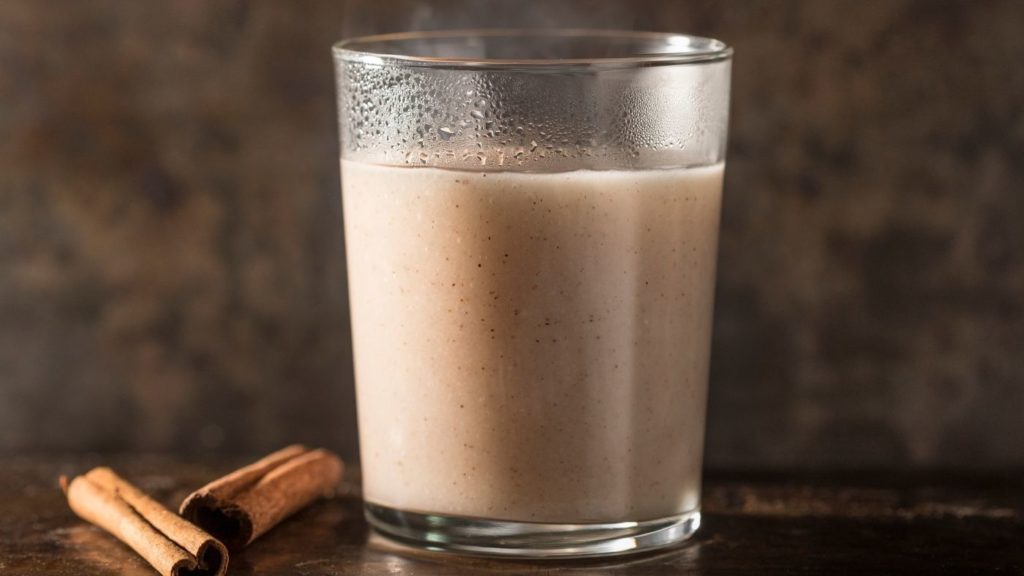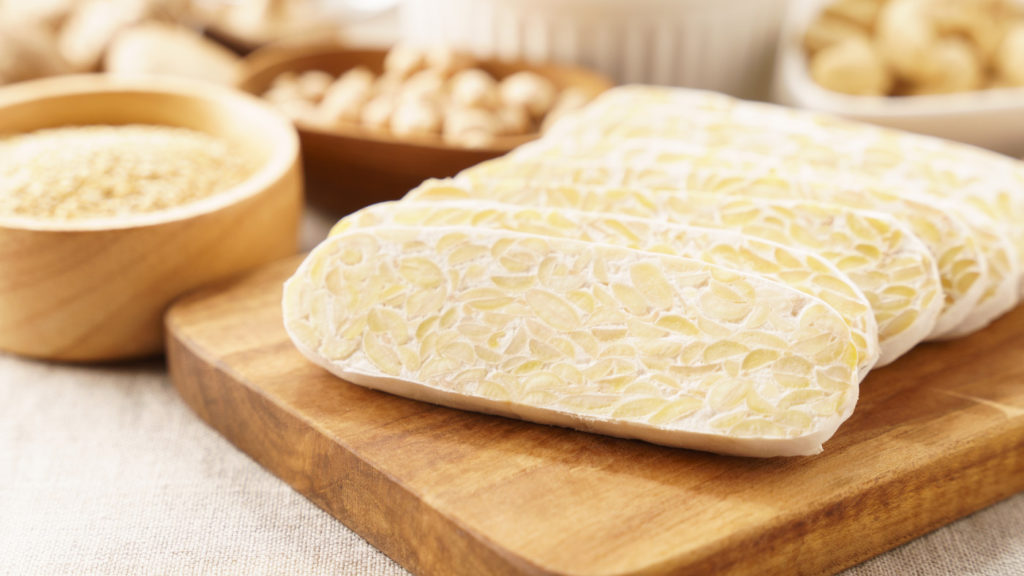This handbook is designed to guide you in the use of Revolution Fermentation’s dehydrated sourdough starter culture.
Making sourdough bread is a fantastic project!
In this manual, you’ll find all the information you need to make your sourdough a success that you’ll remember.

What Is Sourdough?
Sourdough is a mixture of flour and water in which natural yeast and bacteria colonies settle and find a favourable living environment. This mixture is used to inoculate bread dough.
Starting a natural sourdough is normally a process that can take from 7 to 10 days to be ready, and up to several weeks before a satisfactory state of balance is reached. Starting with a strain of dehydrated sourdough starter means you’ll have a sourdough suitable for bread-making sooner, and with greater success.
Each species of microorganism needs specific conditions to develop properly. Feeding the sourdough with flour and water provides a new source of nutrients and keeps the microorganisms healthy to ensure the successful fermentation of the bread dough.
Sourdough is a healthy environment! In fact, it acidifies during fermentation, and this acidification, repeated during successive feeding cycles, helps to select the right colony of yeast and bacteria for bread-making and to eliminate potentially harmful bacteria.
Steps for Preparing Sourdough
In summary, it takes 4 to 5 steps to go from dehydrated sourdough to sourdough bread.
- Day 1: activating the dried sourdough starter and feeding #1
- Subsequent days: feedings
- Harvest the sourdough and make bread!

Read Before You Start
Here are a few things to consider before you get started.
Containers
It’s recommended that you use two containers large enough to hold at least twice the volume of sourdough you’ll be making. To avoid contamination, it’s important to use a clean lid or cloth to cover the containers.
Chopstick
A chopstick is an ideal utensil for mixing sourdough, as it is long and thin. If you don’t have one, you can use a long fork as an alternative.
Rubber Band
It’s useful to use a rubber band to monitor the growth of your sourdough.
Kitchen Scale
A kitchen scale is very practical, not to say essential, for making your homemade sourdough bread. If you don’t have one, we’ve provided the measurements in millilitres (ml) so that you can use measuring utensils as an alternative. Choose a weighing scale with an accuracy of +- 1g.
Water
It’s important to have good quality, chlorine-free water. You can filter or boil it to remove impurities, bacteria, and chlorine. Decanting the water also removes chlorine.
Flour
We recommend using rye or wholemeal wheat flour to feed your sourdough. Wheat flour is very popular because of its availability and reliability, while rye flour is rich in sugar, minerals, and enzymes, which facilitate fermentation and give a good texture. Wholemeal or sifted flours (T80) contain the bran of the grain, which provides enzymes, vitamins, and minerals useful for fermentation. It is possible to use other types of flour (including blends), such as buckwheat, spelt, or gluten-free flour, but this will be a more experimental approach, which we do not recommend during activation. It’s important to use quality flours to get the best results.
Temperature
The temperature of the water and the room is important for good sourdough development. The ideal temperature range is between 20 and 35°C. Below 20°C, sourdough growth will be slowed, and, over time, there could be an imbalance of bacteria and yeast. Above 35°C, sourdough could eventually die. The higher the temperature, the faster the fermentation.

How to Activate Your Dehydrated Sourdough (Dried Sourdough Starter)
Equipment
- 2 500 ml glass containers with lids
- 1 chopstick
- 1 Elastic band
- 1 Kitchen scale
Ingredients
- 1 sachet dehydrated sourdough
- Lukewarm water
- flour
Steps
Rehydration
- Pour the contents of the dehydrated sourdough sachet into the container.
- Add 30g lukewarm water (2 tbsp.).
- Stir vigorously for 1 minute.
- Wait for 15 minutes.
Feeding #1
- Add 30g flour (3 tbsp.).
- Add 30g lukewarm water (2 tbsp.).
- Stir vigorously for 1 minute, then place the lid on loosely.
- Using a rubber band, mark the height of the mixture.
- Let it stand for 24 hours in a warm place.
Next Feedings
- Mix the sourdough.
- Pour 90 g of sourdough (7 tbsp.) into a new container. Set aside the excess (“discard”).
- Add 90 g of flour (9 tbsp.).
- Add 70 g of lukewarm water (5 tbsp.).
- Stir vigorously for 1 minute, then place the lid on loosely.
- Using a rubber band, mark the height of the mixture.
- Let it stand for 24 hours in a warm place.
Notes
When preparing your sourdough, you may have to dispose of some of it, known as “discard”. This is usually thrown into the compost, but there are alternative uses, as explained in the FAQ.

Sourdough Bread Recipe
Equipment
- 1 Large bowl
- 1 Cloth or plastic wrap
- 1 Cast iron casserole, pizza stone, or baking tray
- 1 Kitchen scale
Ingredients
- 500 g unbleached wheat flour
- 350 g water
- 10 g salt
- 10 g sourdough
Steps
- In a large bowl, mix the flour and salt, then add the sourdough and water. Knead the dough until it is smooth and no longer sticks to your fingers, for two to three minutes.
- Cover with a cloth or plastic wrap and leave the dough to rest for 30 minutes.
- Make 2 flaps to structure the dough. A flap consists of folding the dough over itself by grasping it from underneath, bringing it to the top, turning the bowl slightly, and repeating this operation until a complete turn of the bowl. 2 flaps = 2 turns of the bowl. This step adds elasticity to the dough and gives it strength to rise.
- Cover with a cloth or plastic wrap, then leave the dough to ferment for 12 to 16 hours depending on the temperature of the room (less time if your room is warm).
- Shape the dough into the desired form (round, baguette, etc.) and let it rise for 45 minutes to 1 hour.
- Preheat the oven to 485°F (250°C), preheat the cast iron casserole dish, stone, or baking tray.
- Steam in the oven allows the bread to rise and prevents the outer crust from forming quickly. You can use an airtight casserole (which retains moisture) or pour water over a preheated baking tray just before placing it in the oven.
- Place the dough in the oven. After 20 minutes, lower the temperature to 400°F (205°C).
- Remove the lid of the casserole to obtain a golden crust. If you are not using a casserole dish, remove the water from the oven and cook until the bread is golden brown. The remaining cooking time will be 15 to 25 minutes.
- Let it cool on a wire rack for at least 45 minutes before serving.
How to Make a Flap of Bread Dough
When to Collect the Sourdough?
It’s best to collect the sourdough when it’s at the peak of its activity. Visually, you can recognize ready-to-use sourdough when it has a foamy texture. The mixture then contains a lot of CO2. To check whether the sourdough is ready, simply drop a small amount into a glass of water. If it floats, it’s ready!
Watch the sourdough grow by observing the bubbles that appear in the mixture and the tangy smell that develops. It’s also common for sourdough to develop apple or egg aromas, which are signs of vitality. These aromas can vary depending on the water and flour used. Trust your sourdough.
How Often Should I Feed My Sourdough?
It’s important to keep your sourdough healthy by feeding it regularly. Ideally, feedings should be made daily, but you can space them out over several days.
Sourdough can also be stored in a dormant state in the fridge for weeks at a time but will need to be fed several times before it is ready to be used again.
It’s easy to tell when your sourdough is hungry and needs feeding. The sourdough will be very liquid, all the gluten having been digested during fermentation. Also, a layer of liquid (whitish to brownish) may develop on the surface of the sourdough. This liquid may smell like beer or vinegar, but this does not mean that the sourdough has gone bad. Simply remove this layer of liquid or mix it and feed the sourdough.
How Can You Improve Your Technique?
Making sourdough and sourdough bread is an art. The basic technique is very simple but mastering all the intricacies requires patience and observation.
To improve your sourdough bread-making technique, it’s important to understand the technicalities of sourdough composition, such as the choice of flour, temperature, fermentation time, and quantity of water. It is advised to experiment by modifying these parameters individually to understand how this affects the quality, taste, and strength of the sourdough.
It’s also important to maintain a regular routine in the preparation and management of your sourdough. This means feeding it regularly and keeping it at the right temperature to maintain its vitality. It can be useful to keep notes on the results obtained during experimentation to understand the effects of each change and reproduce the desired results.
In the end, shaping and baking are arts that require practice and good advice to master.
Follow our blog to learn more.
Frequently Asked Questions
How Do You Avoid Sourdough Discard?
You have two options for avoiding discard: 1) Reduce the quantity of sourdough produced to suit your bread-making needs. 2) Increase the quantity of sourdough used by making more loaves or using more sourdough. You can also store the discard in the fridge or freezer for future recipes for homemade bread, muffins, pancakes, crackers, etc.
Is Sourdough Bread Gluten Free?
Sourdough bread contains gluten, but the fermentation method used can reduce the amount, making the bread easier to digest for some people sensitive to gluten. However, it is not suitable for people with celiac disease who must follow a strict gluten-free diet. It is therefore advisable to feed their sourdough with gluten-free flour and follow a proven gluten-free bread recipe for best results.
How Do I Know if the Sourdough Is Properly Hydrated?
The hydration of sourdough is essential for its growth and development. It is measured in percentage terms by comparing the weight of water and flour used. A simple formula is to hydrate the sourdough between 70 and 80%, i.e., like a loaf of bread. For example, 90g of flour and 70g of water gives a hydration rate of 78% (70/90 x 100).
How Do You Increase or Reduce the Amount of Sourdough?
To change the quantity of sourdough produced, simply increase, or reduce the quantity of sourdough discarded. However, you will need to adjust the quantities of flour and water in the feedings. Always add the same amount of flour as sourdough. The weight of the water should represent 80 to 90% of the flour weight.
Why Is My Sourdough Very Liquid and Smells of Alcohol or Nail Polish?
Your sourdough is hungry! It’s time for a feeding.
How Can I Tell if the Sourdough Is Contaminated?
Regularly fed sourdough presents no risk of contamination, but inappropriate conditions can leave it vulnerable. Signs such as an unpleasant smell or an abnormal appearance (black or pink spots, hairy texture, etc.) may indicate contamination. If you suspect contamination, it’s best to discard the sourdough and start again with fresh sourdough.
Is It Possible to Dehydrate, Refrigerate, or Freeze Sourdough?
Yes, to dehydrate your sourdough, you can take a portion of sourdough, spread it out in a thin layer on a baking sheet, and let it air dry. Once dry, collect the shavings and store them in the fridge. Dehydrated, refrigerated, or frozen sourdough loses its strength, so feed it before use. It will keep for several months.

